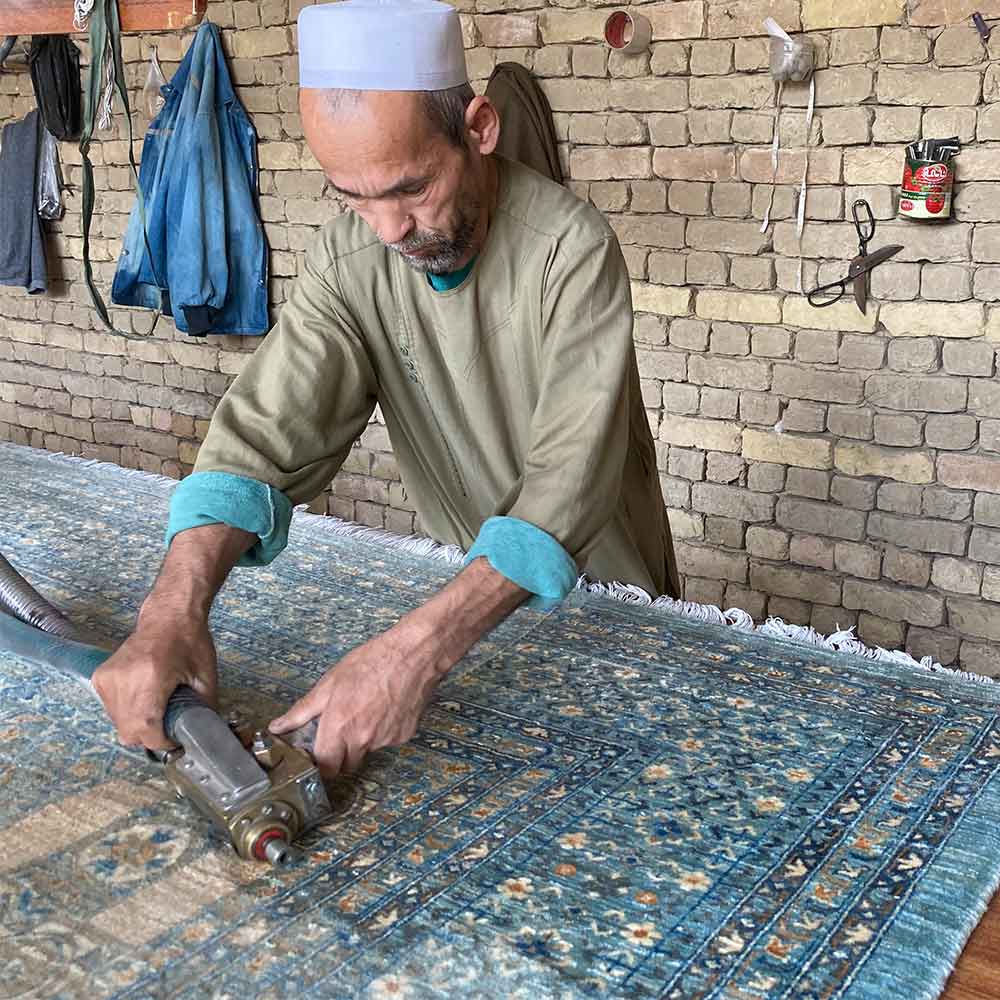THE ART OF
CRAFTING AFGHAN
HANDMADE RUGS
A Journey of Creativity and Tradition
Step into the enchanting realm of handmade rugs, where timeless works of art are brought to life through centuries-old artisanal skills and creative brilliance. In this section, we will guide you on a captivating journey delving into the intricate craftsmanship involved in crafting these extraordinary rugs – from meticulously hand-picking wool fibers to adding the final exquisite touches. Immerse yourself in an exploration that reveals the awe-inspiring dedication and artistic mastery invested into each unique piece.
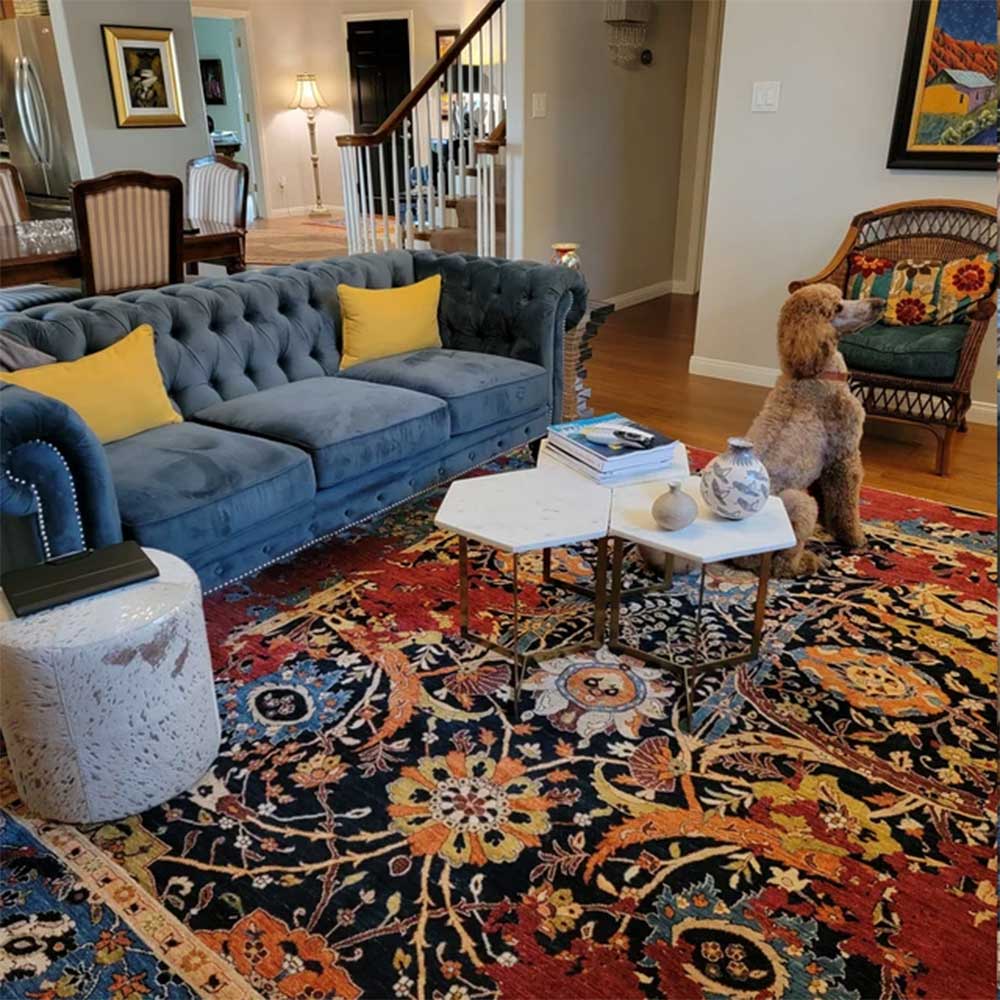
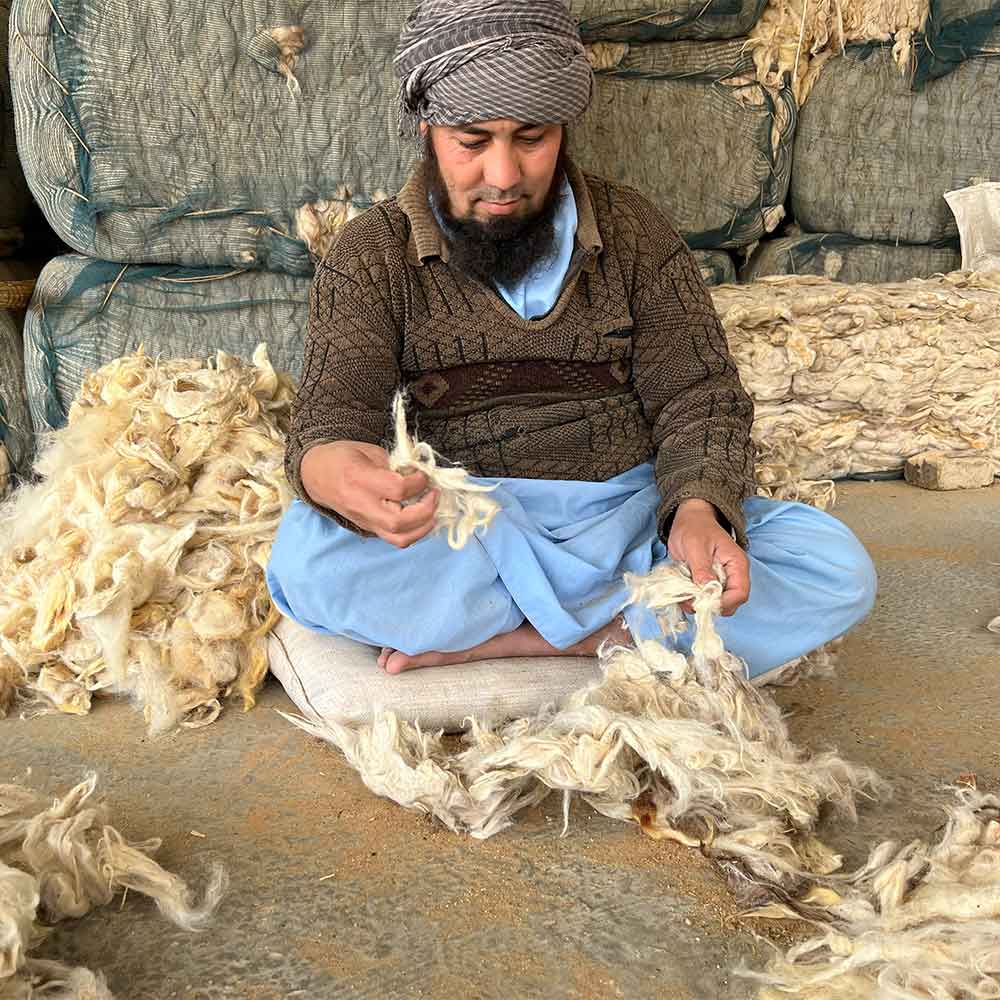
Step 1: Selection of Wool Fibre
The process starts with the meticulous choice of wool, which is considered the essence of each handcrafted rug. There are two categories of wool that are utilized: machine-spun and hand-spun. Unlike machine-spun wool which can be easily purchased from stores, hand-spun wool requires a sequence of actions performed prior to dyeing. Local sheep, which inhabit and graze in the hilly areas of Northern Afghanistan, offer premium-quality and shiny wool. Experienced shearers carefully gather the wool while taking utmost care for the welfare of these animals.
The wool is carefully exposed to the drying effects of the sun in northern Afghanistan, where there is ample dry and sunny weather. This helps eliminate any moisture from the fibers. Afterwards, manual sorting takes place to remove any impurities present in the wool. Skilled locals from Aqcha use traditional spindles to spin these fibers into yarn. The resulting yarn is then gathered into loose bundles that are prepared for dyeing by ensuring uniform distribution throughout.
Step 2: Dyeing Process
To achieve a variety of colors, separate pots are used for dyeing. The yarn bundles are submerged in large pots that are heated to approximately 200 degrees Celsius(400 Fahrenheit). By constantly stirring the yarn for 4 hours, an even distribution of dye is achieved, resulting in vibrant and captivating shades. After being dyed, the bundles are set aside under the sun until they dry completely. This process allows the wool to absorb not only the color but also the warmth of nature.
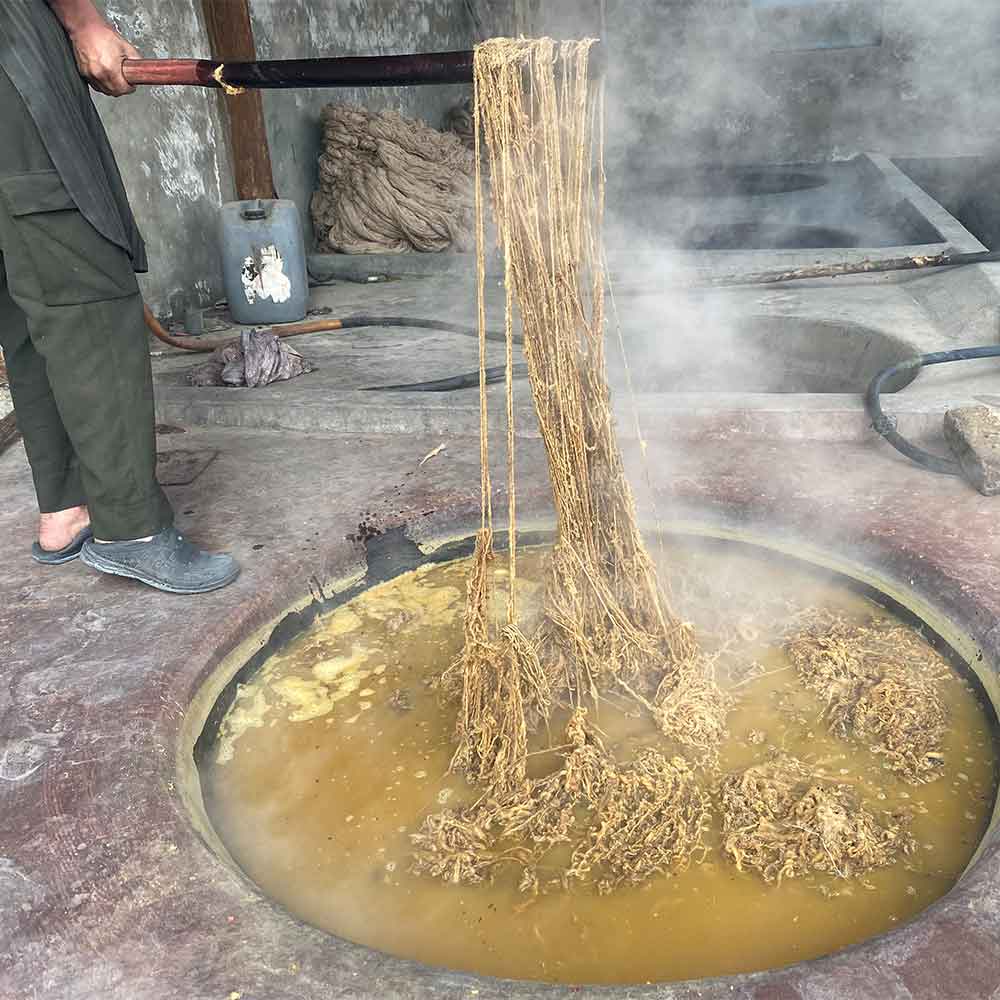
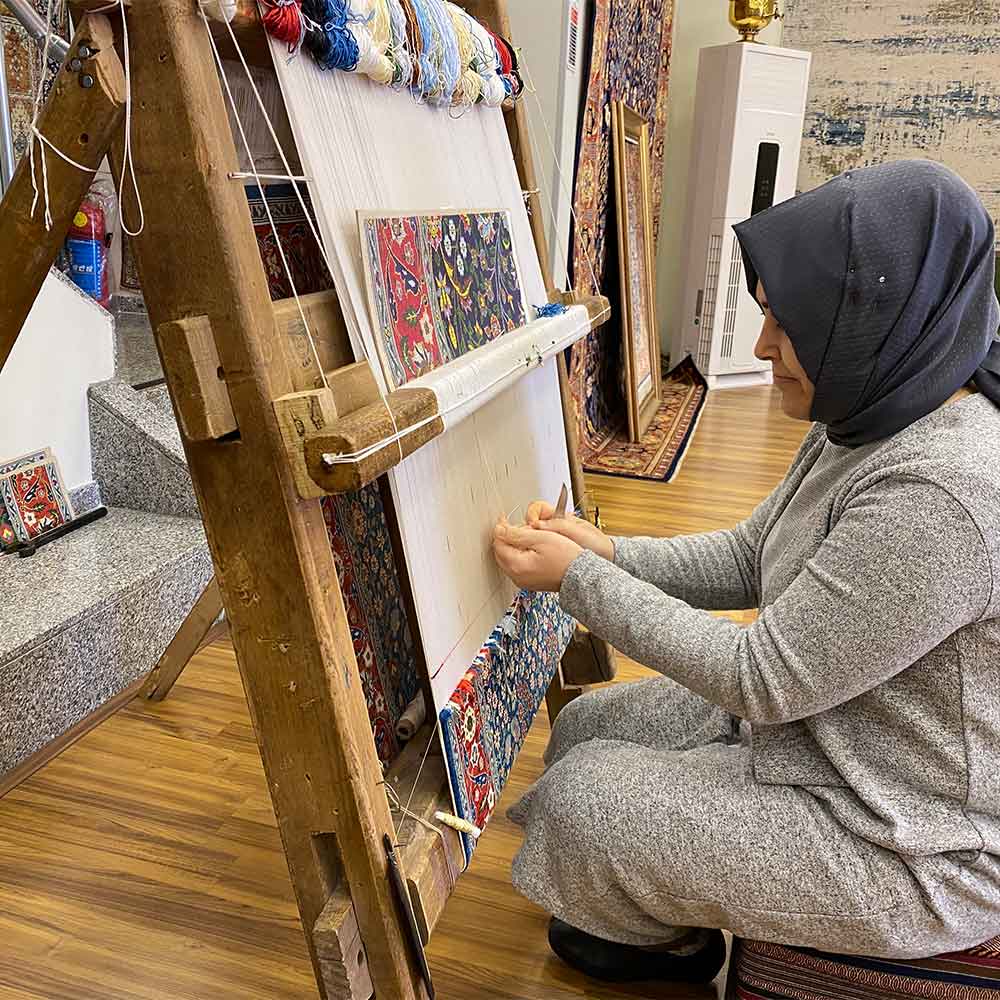
Step 3: Weaving Process
The art of weaving adds vitality to the rugs, transforming vivid hues and elaborate patterns into tangible creations. Intricate designs are meticulously crafted on millimetric graph papers to serve as templates for the rug’s patterns. Skilled weavers, majority of whom are highly talented women artisans from Aqcha in Afghanistan, bring these designs to life through their expert hands.
Every weaver is given a loom, wool, weft yarn, and all the required equipment to commence their skilled endeavor. The duration of weaving a rug can range from 2 to 12 months depending on its size and intricacy, demanding dedicated labor throughout. The process involves combining patience, passion, and precision as they meticulously craft every inch of the rug into an extraordinary masterpiece that narrates a unique story.
Step 4: Finishing Process
The final, crucial step in the production of handmade rugs is the finishing process. This process involves a ultra-careful cleaning to ensure that newly woven rugs are free from any impurities or debris. The rugs undergo a careful dusting off using large cylindrical cages. These spacious enclosures gently remove any dust or debris without causing damage to the wool fibers. Afterwards, only water and natural soap are used for washing – no harsh chemicals are involved. During this gentle cleansing phase, each individual wool fiber is meticulously cleaned with an eco-friendly lather created by these natural agents. This approach ensures that every fiber is thoroughly cleansed while preserving both the integrity and color of the wool.
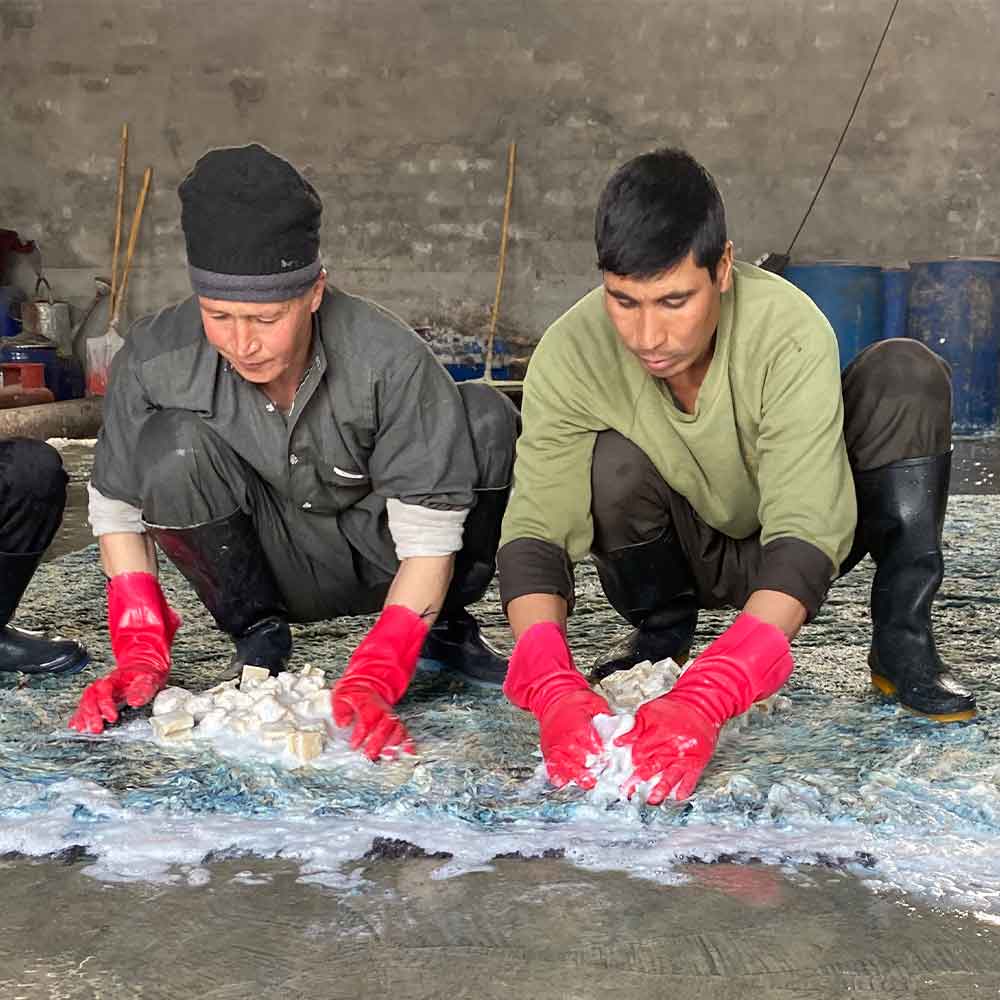
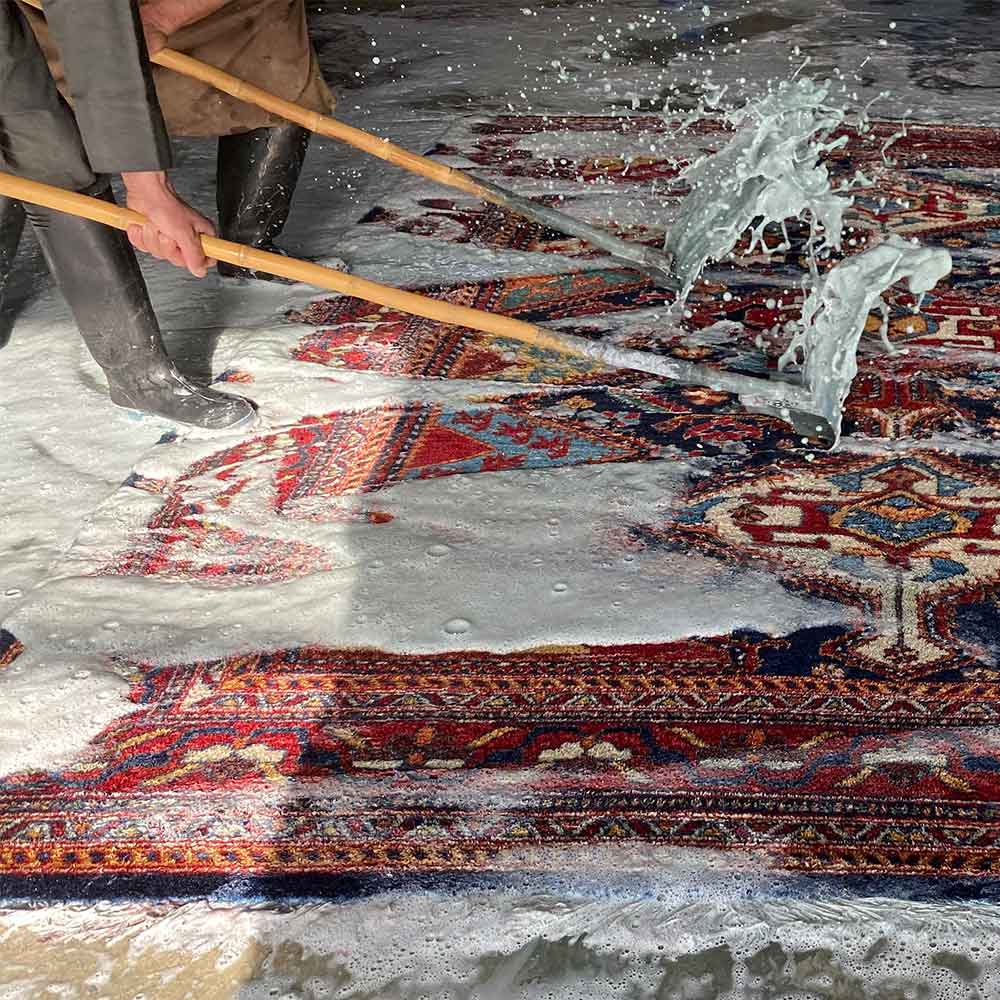
After the rugs are thoroughly cleaned using squeegees, great care is taken to ensure that every detail remains in pristine condition. To achieve a smooth and refined finish, the edges of the rugs are carefully trimmed once they have been properly dried. In order to enhance their durability, any loose ends are securely fastened through heat treatment. To achieve a parallel and uniform appearance, the edges of the rugs can be carefully aligned by placing them onto two folding planks and stretching them out. This process helps to create straight edges along all sides of the rug.
As part of the final finishing touches, any unnecessary or mismatched colored knots are trimmed away. The fringes receive expert attention as well – they undergo precise trimming and binding techniques which prevent knots from unraveling and contribute to an overall polished and coordinated appearance. As a final touch of polishing, sometimes the fringes are dyed to complement the intricate design of the rug.
Every weaver is given a loom, wool, weft yarn, and all the required equipment to commence their skilled endeavor. The duration of weaving a rug can range from 2 to 12 months depending on its size and intricacy, demanding dedicated labor throughout. The process involves combining patience, passion, and precision as they meticulously craft every inch of the rug into an extraordinary masterpiece that narrates a unique story.
And there you have it – the mesmerizing journey of how handmade rugs are crafted. Each step, from selecting the finest wool to the intricate weaving and meticulous finishing, is a labor of love and tradition. These rugs are not just decorative pieces; they are art forms that carry the essence of skilled artisans and their cultural heritage.
Next time you run your fingers across the smooth surface of a handmade rug, take a moment to appreciate the incredible craftsmanship and dedication that lie within its fibers. Let us celebrate and preserve this beautiful art form that has woven together the threads of creativity and tradition for generations to come.
